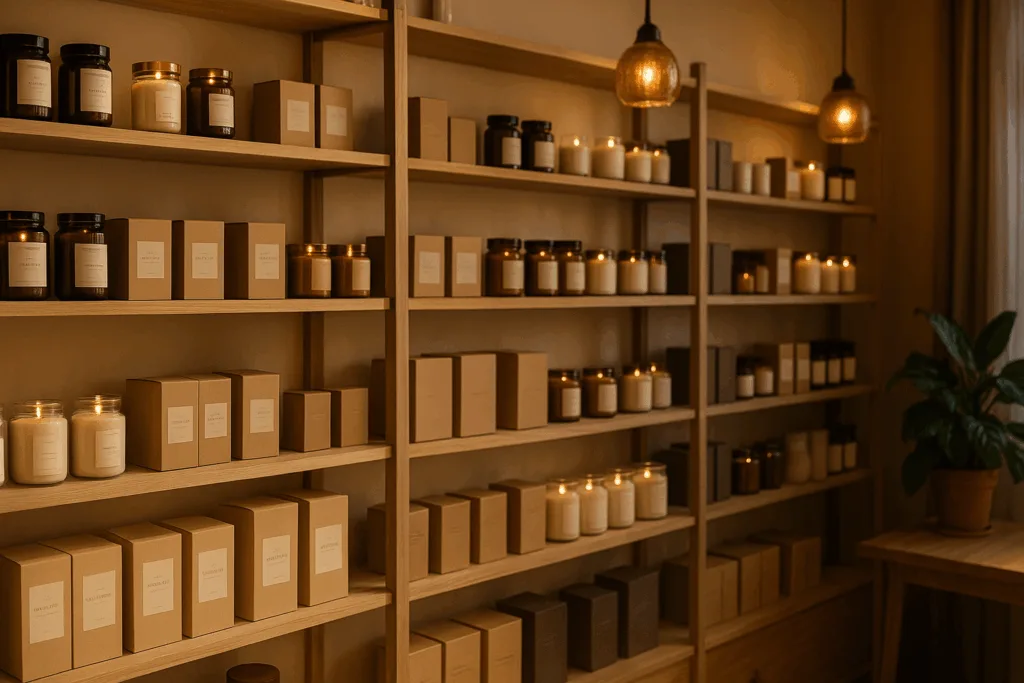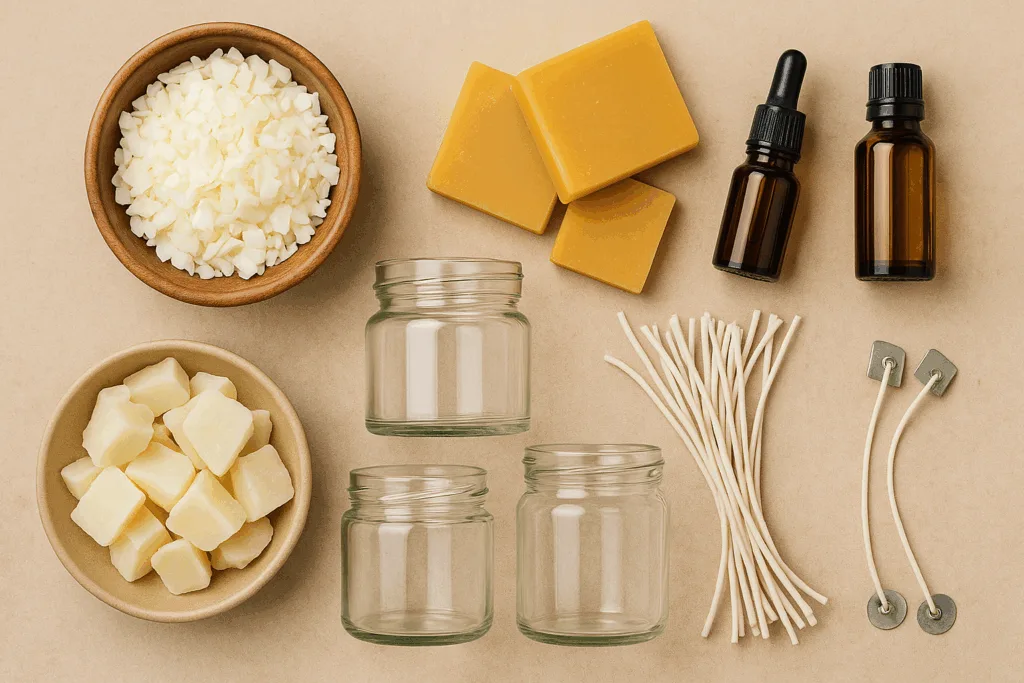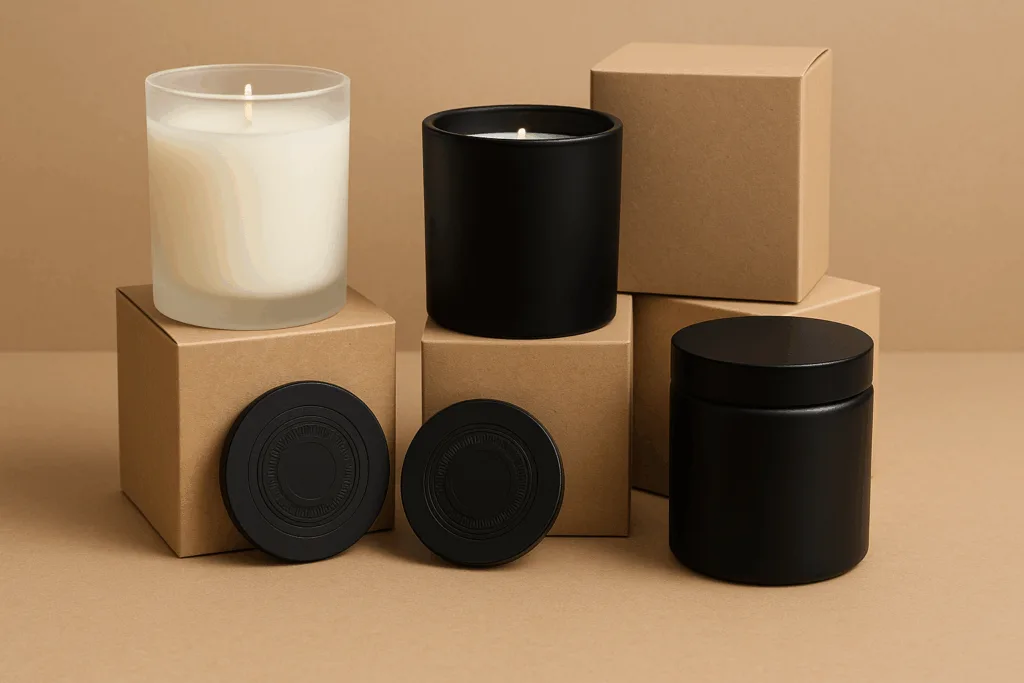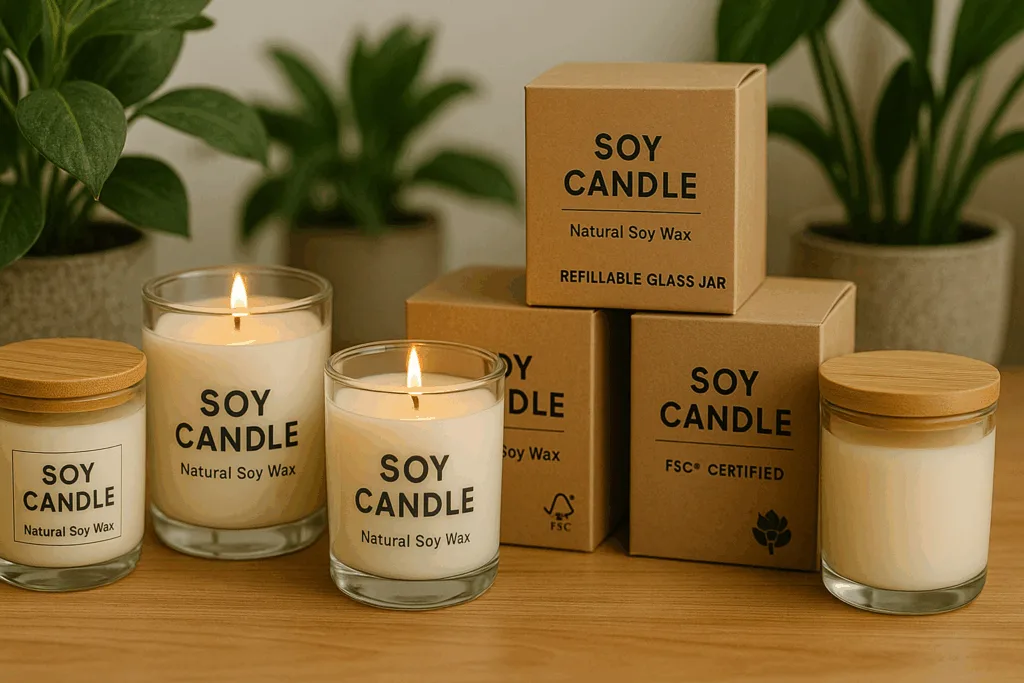1. Introduction: Why Private Label Candles Shift the Margin Curve
Candles sit at the sweet spot of retail: they are affordable luxuries with strong perceived value, year‑round gifting appeal, and emotional resonance. For retailers, Maximizing Retail Margins with Private Label Candle Programs isn’t just a slogan. It is a practical path to higher gross profit, stickier brand loyalty, and greater control over product experience. Unlike commodity products, candles deliver multi‑sensory storytelling—fragrance, flame, light, texture, and design—so shoppers judge them as much by feeling as by function. That makes differentiation easier and margin protection stronger.
Private label flips three levers at once: (1) cost—through negotiated inputs and streamlined packaging; (2) price—thanks to exclusivity and brand equity; and (3) velocity—via curated assortments and seasonal drops. When a category balances these levers, margin expands without racing to the bottom on discounts. Throughout this guide, Circe Home’s specialists show how to design, source, test, position, and scale candles so the category pays back quickly and compounds over time.
2. Understanding Private Label Candle Programs
Definition and Key Features
A private label candle program is a partnership model in which a manufacturer produces candles that carry the retailer’s own brand. Core features include bespoke scent architecture, vessel and label design, flexible minimum order quantities (MOQs), and documented quality assurance. You own the visual language and pricing narrative; your manufacturing partner owns production expertise and compliance support.
How They Differ from Wholesale Candles
Wholesale reselling trades control for convenience: you buy finished goods, share them with competitors, and price‑match in a race to parity. With private label you claim exclusivity, curate formats (e.g., 7–9 oz jars, 2‑wick 14 oz, travel tins, wax melts), and set pricing tiers without direct comparison. The result is less price compression and more room for storytelling, bundles, and limited editions.
3. The Economics of Retail Margins
What Determines Profitability in Retail
Profit is not a mystery; it is a math problem. Key levers include COGS (wax, fragrance, wick, vessel, lid, label, box), conversion rate, average order value (AOV), sell‑through, markdown rate, and return rate. Your goal is to improve gross margin while maintaining healthy turns. Private label helps because you can engineer costs (e.g., vessel standardization) and engineer demand (e.g., seasonal cadence) from day one.
Why Candles Are a High‑Margin Category
Candles enjoy high perceived value relative to costs. They solve for décor, scent, and ritual—making them easy gifts with minimal size and fit risk. They also photograph beautifully, fueling social sharing and organic discovery. In practice this means they tolerate premium pricing when the story, packaging, and fragrance quality align.
4. Consumer Insights & Demand Drivers
Home Fragrance & Gifting Occasions
Candles sell in every season because occasions never stop: housewarmings, birthdays, holidays, thank‑yous, teacher gifts, and self‑care treats. Plan a 12‑month calendar mapping moments (e.g., Spring Clean & Calm; Summer Citrus; Harvest & Hygge; Holiday Spice) so supply meets predictable spikes. Align gift sets with these moments and pre‑bundle cards, matches, or trays to lift AOV.
Wellness and Mood Benefits
Scent influences mood and memory. Customers reach for lavender and chamomile to relax, citrus to energize, and cedar or sandalwood to ground a room. While you should avoid medical claims, you can truthfully tell sensory stories—evening wind‑down, focus hour, rainy‑day reading. These narratives increase use occasions and encourage repeat purchases.
5. Selecting the Right Candle Materials
Natural Wax Options (Soy, Beeswax, Coconut)
- Soy: Clean burning, accessible cost, great for everyday premium lines.
- Beeswax: Naturally honey‑toned, long burn, premium positioning.
- Coconut: Excellent hot throw and creamy texture, ideal for luxury lines. Blends (e.g., soy‑coconut) can optimize cost, surface finish, and scent performance.
Fragrance Oils vs. Essential Oils
Fragrance oils provide stability, breadth of notes (e.g., gourmand, ozonic), and consistent supply. Essential oils support a natural narrative, but may have narrower palettes and higher costs. Many retailers use a hybrid approach—nature‑inspired accords anchored by stable aromatic components—then focus claims on phthalate‑free, paraben‑free, and IFRA‑compliant formulas.
Wick Selection & Sustainable Packaging
Right‑sized wicks prevent tunneling and soot. Cotton or wooden wicks each signal style choices; wooden wicks add a soft crackle that customers adore. For packaging, favor recycled glass, aluminum lids, FSC‑certified paper, and soy‑based inks. Refillable vessels and return programs add a circular story that customers love to share.
Quick Compare — Wax Options
Wax Burn Profile Scent Throw Cost Tier Brand Positioning Soy Clean, even Good $ Everyday premium Beeswax Long, bright Moderate $$–$$$ Heritage & natural luxury Coconut Creamy surface Excellent $$ Modern luxury
6. Candle Design & Customization
Choosing Signature Scents
Build a core library of 6–10 SKUs that cover clean, floral, gourmand, wood, and seasonal profiles. Give each a memorable name plus simple, sensory copy: “Seaside Morning—salt air, driftwood, and sun‑warmed citrus.” Rotate 3–4 limited editions per quarter to refresh shelves and test new directions.
Packaging That Speaks to Your Brand
Your vessel is a billboard. Frosted glass whispers calm minimalism; colored glass signals fashion; stoneware and matte black say elevated design. Embossed lids, textured labels, and die‑cut boxes create tactile delight. Add batch codes for traceability and QR codes that unlock playlists or scent stories.
Seasonal and Limited Editions
Seasonality creates urgency and social buzz. Tie SKUs to moments—Peony Brunch (Mother’s Day), Citrus Porch (Summer), Maple & Moss (Fall), Midnight Fir (Holiday). Make art collaborations and numbered runs to attract collectors while learning which notes deserve promotion to the core line.
7. Pricing Strategy & Margin Architecture
Keystone vs. Premium Pricing
Start with target landed cost and work backward. A 4–5× multiple on COGS is common at premium tiers when exclusivity and storytelling are strong. Anchor your shelf with three clear tiers—Good (entry glass jar), Better (decorative vessel), Best (double‑wick luxury)—so shoppers trade up naturally.
Bundling, Gifting, and Trade‑Up
Bundle a candle with a wick trimmer and snuffer; offer trio discovery sets; price gift boxes just below a psychological threshold (e.g., $49). Use threshold promos (free shipping at $60) and subscribe‑and‑save for refills. Guardrail discounts (e.g., never exceed 20% except end‑of‑season) to protect perceived value.
8. Supply Chain & Production Management
Partnering with Manufacturers like Circe Home
A great partner is a multiplier. Circe Home co‑develops scent briefs, recommends wax systems, prototypes wicks, and aligns packaging to your brand voice. You gain a seasoned R&D team without carrying overhead, plus documentation that speeds compliance reviews and retail onboarding.
Quality Control and Scalability
Institute SOPs: incoming inspection of raw materials, small‑batch pilot burns, accelerated stability tests, and retention samples by lot. As velocity increases, scale with cell production (parallel lines per scent) and forecast by week of supply, not just unit counts.
Lead Times, Inventory, and Cash Flow
Typical lead times range from 4–10 weeks depending on vessel availability and decoration. Maintain a rolling 13‑week forecast and safety stock on top sellers. Consider staggered POs—phase 1 for core SKUs, phase 2 for seasonal—to smooth cash and warehouse loads.
9. Compliance, Safety & Testing
Safety Standards & Labeling
Follow IFRA usage guidelines for fragrance, ASTM candle testing practices, and GHS/CLP for hazard communication where applicable. Include warnings, burn time, weight/volume, materials, and batch codes on labels. Clear safety labels reduce misuse and liability.
Testing Protocols
Test for wick performance, soot index, cold and hot throw, surface stability, frosting (for soy), and fragrance discoloration. Document burn tests across the full life of the candle at different ambient temperatures. Store results in a technical file for each SKU.
Useful references: The National Candle Association (https://candles.org) and IFRA Standards (https://ifrafragrance.org) provide educational resources on candle safety and fragrance compliance.
10. Marketing Private Label Candle Programs
Storytelling Through Product Pages
Write copy that is sensory, specific, and honest. Lead with benefit (“Set a calm tone for your evening ritual”), then list notes, materials, and sustainability choices. Embed schema markup, alt text, and FAQs to capture long‑tail search and featured snippets about private label candles and eco‑friendly wax.
Visual Branding & Social Media
Invest in bright, natural‑light photography and short‑form video showing the ignition moment, melted wax pool, and mood setting. Post scent pairings with rooms—citrus in kitchen, cedar in study. Curate a cohesive grid so shoppers recognize your brand at a glance.
Influencer & UGC Partnerships
Gift discovery sets to micro‑creators (5k–50k followers) in home décor and wellness. Provide transparent briefs and tracking links, then reshare top UGC on product pages. Encourage post‑purchase reviews with a gentle email and loyalty points.
11. Retail Distribution Strategies
In‑Store Experience & Merchandising
Place candles near textiles and tabletop to cue home refresh. Offer sniff‑strips and testers; add matchbooks for theater. A warm lit vignette converts better than a cold shelf. Educate staff on scent notes and burn care so they sell with confidence.
E‑commerce Conversion Optimizations
On PDPs, show burn time, materials, notes, care, and real customer photos. Add comparison charts (size/weight/wicks), low‑inventory flags, and “pair with” suggestions. Surface bundles on cart and checkout to lift AOV. Make returns simple to reduce hesitation.
Subscription and Gift Programs
Monthly or seasonal subscriptions drive predictable revenue. Let subscribers choose a scent family and surprise with limited editions. Corporate gifting programs with custom sleeves or cards open B2B margin streams.
12. Sustainability as a Selling Point
Eco‑Friendly Inputs
Use recycled/recyclable glass, aluminum lids, FSC paper, and soy‑based inks. Offer refill pucks for popular vessels. Communicate phthalate‑free fragrance and lead‑free wicks where applicable.
Transparency & Impact Storytelling
Map your supply chain in simple language: where the wax comes from, who pours the candles, how packaging is sourced. Publish impact highlights annually (e.g., percentage recycled content, waste diverted). QR codes can link to a short video from the pour line—customers love seeing real craftsmanship.
13. Data & Analytics for Category Optimization
Sell‑Through, Repeat Rate, and Gross Margin Return
Track GMROI, weeks of supply, and repeat purchase rates by scent family. Use cohort analysis to see which first purchases lead to the highest lifetime value. Trim the tail—retire low performers and reinvest in winners.
A/B Testing Scents, Formats, and Visuals
Test copy (e.g., “Lavender Cloud” vs. “Evening Lavender”), vessel colorways, and image styles. Pilot two wick types or a tin vs. glass format for travel SKUs. Let data inform gut—but keep space for brand‑right creativity.
14. Case‑Based Playbooks
The Design‑Led Boutique
Small footprint, high aesthetics, limited SKUs. Strategy: premium vessels, artist collaborations, and curated playlists via QR. Margin driver: high ASP and low promo frequency.
The Value‑Driven Mass Retailer
High volume, sharp price points, broad seasonal change. Strategy: efficient vessels, soy‑blend wax, robust planograms. Margin driver: scale purchasing and fast turns.
The Digital‑First DTC Startup
Community‑first storytelling, nimble launches, and strong email flows. Strategy: discovery sets, refer‑a‑friend, content on ritual and home care. Margin driver: direct distribution and subscription.
15. Challenges & How to Overcome Them
Managing Costs Without Diluting Quality
Standardize vessels and lids, consolidate fragrances that share bases, and stage artwork changes seasonally instead of monthly. Negotiate cartonization and pallet plans to reduce freight per unit.
Meeting Customer Expectations
Implement strict burn testing and publish clear care guides: first burn 2–3 hours, trim wick to 1/4 inch, keep away from drafts. Proactive education lowers complaints and increases 5‑star reviews.
Staying Ahead of Trends
Run quarterly scent labs with small drops to probe interest (e.g., mineral, tea, botanical gourmands). Use pre‑launch waitlists to measure demand before committing to scale.
16. Future Trends in Private Label Candles
Personalization (on‑demand labels, engraved lids), tech‑assisted care (timers, warming bases), and wellness adjacency (breathwork kits, soundscapes) will shape the category. Expect growth in refill systems and bio‑based materials that lower carbon intensity without sacrificing performance.
17. Conclusion: Unlocking Long‑Term Retail Growth
Private label candles compound value: better margins, better storytelling, better loyalty. With a thoughtful mix of materials, design, pricing, operations, and analytics—and a manufacturing partner like Circe Home—your candle program can become a flagship category that funds growth across the business. Keep testing, keep listening, keep refining. That is how retailers keep Maximizing Retail Margins with Private Label Candle Programs year after year.
FAQ
1) How long do private label candles usually burn?
Burn time depends on wax, wick, and size. A typical 8–9 oz soy or soy‑coconut candle delivers ~40–50 hours; larger double‑wick formats extend beyond that with proper care (first burn to full melt pool; trim wicks).
2) What’s the difference between essential oils and fragrance oils in candles?
Essential oils are distilled from plants and carry natural profiles but can be costlier and less consistent. Fragrance oils broaden notes (e.g., marine, gourmand), are more stable, and often achieve stronger hot throw. Many brands blend the two for balance.
3) Are private label candles environmentally friendly?
They can be. Choose bio‑based waxes, lead‑free wicks, recycled or refillable vessels, and FSC paper. Share your choices transparently and encourage reuse or refills.
4) What profit margins are realistic for private label candles?
Depending on positioning and scale, 60–80% gross margin at retail is achievable when cost engineering, exclusivity, and disciplined promotions work together.
5) How do I choose the right scent assortment for my audience?
Start with a balanced core (clean, floral, wood, gourmand, seasonal). Review sales weekly, watch reviews for note preferences, and refresh 20–30% of the line seasonally based on data and feedback.
6) Can private label candles be customized for corporate gifts or events?
Yes. Offer custom labels, gift sleeves, or engraved lids with MOQs suited to corporate orders. Lead times of 4–8 weeks are common; provide a clear approval process for artwork and samples.
7) What compliance resources should I consult?
See the National Candle Association for safety education (https://candles.org) and IFRA Standards for fragrance usage (https://ifrafragrance.org). Your manufacturer should document adherence and provide safety wording.





